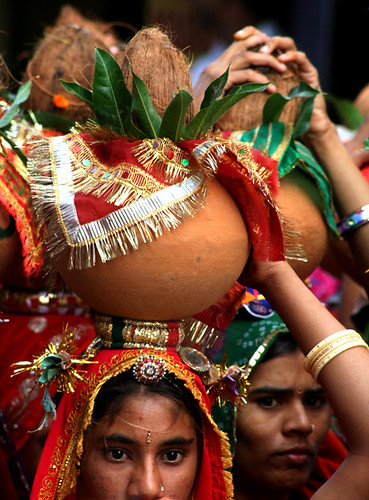Christmas is a festival of joy and happiness people give gifts to there loved one, it is one of the most exciting festival of the year. This is the festival which is celebrated all over the world with full enthusiasm and excitement.

It is celebrated annual holiday on 25th December to honor the birth of Jesus of Nazareth or he is most popular as Jesus Christ. Basically Christan is celebrated through out the Christian among world wide and celebrated by Non- Christian people also as a cultural festival. It is a time when all people come together and enjoy the celebration time.
The English word Christmas is derived from word Cristes maesse (from middle English) or Christ Mass means Mass of Christ's day. The term Xmas have been used for Christ of Rome. This festival is known from different names also nativity, Yule Tide, Noel and many more.

During the long ten days people sing Christmas Carol, to welcome or celebrate the birth of Jesus Christ. As a integral part of tradition associated with, Christmas Tree. This tree is decorated beautifully with balloon, ribbons, chocolates are hand on it and lots of decorative items and it is places inside or outside the house for decoration.
Its is great time for food lover, who love to eat various kind of food it is great time at Christmas. The food traditionally includes apples cider, turkey, custard, candy, champagne, cookies, cake, hot chocolate and many more.
Santa Claus is also known as popularly as Saint Nicolas, father of Christmas bring joy and gifts for all. It is said that Santa Claus give gifts to good children across the world, Santa is considered as historical figure to give gift.
Christmas is celebrated all over the India but in Goa it is celebrated in huge platform because in Goa there is a great influence of Christianity it is supposed to be semi Portuguese colony during Britisher time.
![Reblog this post [with Zemanta]](http://img.zemanta.com/reblog_e.png?x-id=68e70d45-5350-48d0-b393-9f0fe53fd319)

It is celebrated annual holiday on 25th December to honor the birth of Jesus of Nazareth or he is most popular as Jesus Christ. Basically Christan is celebrated through out the Christian among world wide and celebrated by Non- Christian people also as a cultural festival. It is a time when all people come together and enjoy the celebration time.
The English word Christmas is derived from word Cristes maesse (from middle English) or Christ Mass means Mass of Christ's day. The term Xmas have been used for Christ of Rome. This festival is known from different names also nativity, Yule Tide, Noel and many more.

During the long ten days people sing Christmas Carol, to welcome or celebrate the birth of Jesus Christ. As a integral part of tradition associated with, Christmas Tree. This tree is decorated beautifully with balloon, ribbons, chocolates are hand on it and lots of decorative items and it is places inside or outside the house for decoration.
Its is great time for food lover, who love to eat various kind of food it is great time at Christmas. The food traditionally includes apples cider, turkey, custard, candy, champagne, cookies, cake, hot chocolate and many more.
Santa Claus is also known as popularly as Saint Nicolas, father of Christmas bring joy and gifts for all. It is said that Santa Claus give gifts to good children across the world, Santa is considered as historical figure to give gift.
Christmas is celebrated all over the India but in Goa it is celebrated in huge platform because in Goa there is a great influence of Christianity it is supposed to be semi Portuguese colony during Britisher time.
![Reblog this post [with Zemanta]](http://img.zemanta.com/reblog_e.png?x-id=68e70d45-5350-48d0-b393-9f0fe53fd319)

![Reblog this post [with Zemanta]](http://img.zemanta.com/reblog_e.png?x-id=fd338865-a5cc-40c3-88a2-b98e75c03a4c)

![Reblog this post [with Zemanta]](http://img.zemanta.com/reblog_e.png?x-id=f3093dbd-2537-4368-b8ed-6fca4dc7800a)